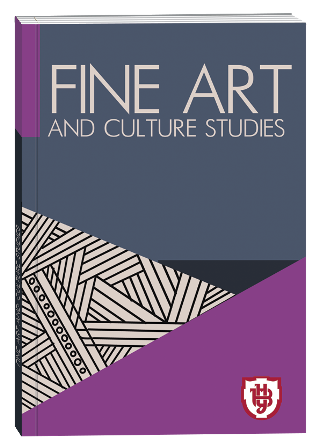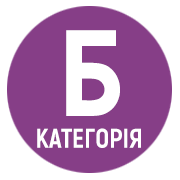FORMATION AND DEVELOPMENT OF ART THERAPY IN THE HISTORICAL AND CULTURAL CONTEXT
DOI:
https://doi.org/10.32782/facs-2023-3-27Keywords:
art therapy, art, creativity, cultural studies of art, history of world culture, socio-cultural rehabilitation.Abstract
Today, art therapy has become a recognized practice used in many clinical, rehabilitation, psychological, educational, and even entertainment settings. It helps people express their feelings, develop their inner potential, and find ways to overcome difficulties. Art therapists use art as a means of communication and self-discovery, helping to improve both physical and mental health. Art therapy is a valuable tool in times of war and conflict, helping people to survive traumatic experiences, develop their strengths and find a way out of difficult life situations through self-expression and healing. It can be an effective support for military veterans, refugees, victims of violence, and any other person experiencing the consequences of conflicts. Given all of the above, the relevance of studying the genesis and evolution of various art therapy techniques and practices in the historical and cultural dimension is undeniable. The purpose of the article is to analyze the genesis and evolution of various methods and practices of art therapy in the history of world culture. Research methodology. Today, art therapy appears as a universal interdisciplinary phenomenon that arose from the combination of art and science and continues to evolve on the methodological foundations of various sciences – psychology, medicine, cultural studies, pedagogy, sociology, etc. The theoretical and methodological basis for the study was formed by scientific theories that analyzed the essence of creativity and its impact on the inner sensory and emotional world of the creator, often referring to ancient archaic art forms and their historical evolution. Psychoanalysis, hermeneutics, intuitionism, existentialism, and others demonstrate such different methodological approaches to the analysis of art therapy. The evolution of art therapy is considered in the context of the history of world culture. The scientific novelty of the study is that art therapy is considered not only as a kind of psychotherapeutic practice, but also the regularities of the origin and evolution of various types of influence of human creative activity on the harmonization of the individual with himself and the world around him are derived. Conclusions. Taking into account all the previous historical experience of "art therapy", today very old methods of art therapy are being restored and new ones are being developed on their basis. In times of war, these practices are widely used and give good results that cannot be achieved by traditional rehabilitation methods. Art therapy is becoming an effective tool for maintaining and restoring the mental, physical, moral, and social well-being of the affected persons. The article highlights the universal factors that have long been implemented in art therapy and today, in modern sociocultural conditions, have become a guarantee of the high efficiency of this field. In addition, art therapy is now emerging as a modern method of cultural recreation, a flexible tool that has a high therapeutic value and allows a person to form a creative attitude to life with all its complexities. Art therapy actualizes the inner potential of each person, promotes healing and harmony of the personality, shapes the creative position of a person, and facilitates integration or reintegration into the cultural environment. It is an extremely resourceful method on the way to overcoming the existential challenges faced by people in modern culture.
References
Авер’янова Н. М. Застосування арт-терапії в сучасних умовах російсько-української війни. Комплексний підхід до модернізації науки: методи, моделі та мультидисциплінарність: матеріали II Міжнародної наукової конференції. м. Луцьк, 3 березня, 2023 р. С. 140–146.
Антошко М. Витоки мистецтва та виховання у Стародавньому Китаї. Вісник Національної академії керівних кадрів культури і мистецтв. №1. 2020. С. 175–180.
Аристотель. Метафізика (Філософія). Переклад з давньогр. О.Панич. К.: Темпора, 2022. 848 с.
Арістотель. Нікомахова етика. Переклад з давньогр. В. Ставнюк. К.: Аквілон-Плюс. 2002. 480 с.
Біблія (Книги Святого Письма Старого і Нового Заповіту). Видання місійного тов-ва «Нове життя Україна, Кемпус Крусейд фор Крайст», 1992. С. 1–959; С. 1–296.
Біда О. Різні підходи до визначення арт-терапії. Педагогічний часопис Волині. №4 (11). 2018. С. 14–17.
Боецій С. Розрада від філософії. Пер. з лат. А. Содомора. К.: Основи, 2002. 146 с.
Бриндіков Ю. Л. Арт-терапія: суть, можливості роботи з військовослужбовцями учасниками бойо- вих дій. Науковий вісник Ужгородського національного університету. Серія: Педагогіка. Соціальна робота. 2017. Вип. 2. С. 42–45.
Брюховецька О. В. Арт-терапевтичні технології у процесі особистісно орієнтованої підготовки майбутніх психологів, які отримують другу вищу освіту. ДВНЗ «Університет менеджменту освіти» НАПН України, 2014. С. 1–13.
Доренський В. Мистецтво як феномен людино творення. Філософська думка. 2009. № 6. С. 61–78.
Іванова В. Арт-терапія: проблеми становлення та розвитку. Наукові праці. Випуск 95. Том 108. 2009. С. 43–46.
Кравченко А. Нестеренко В. В. Можливості використання арттерапії з корекційною метою. Сучасні проблеми логопедії та реабілітації. 2018. С. 171–175.
Лазаревська О. Психологічні фактори впливу арт-терапії на процес розвитку дітей. Вісник ХНПУ імені Григорія Сковороди «Психологія». Вип. 63. 2021. С. 133–145.
Мурсамітова І. А. Евритмія як ідея нормалізації душевної рівноваги людини. Система надання освіти дітям з особливими потребами в умовах сучасного закладу освіти: Збірник за матеріалами V Всеукраїнської науково-практичної конференції (12 грудня 2017 р.). С. 119–121.
Новаківська О. Музикотерапія. Innovative Solutions in Research and Education: Conference Proceedings of the 1st. Vol. 1. 2021. Ст. 92–95.
Сорока О. В. Характеристика музикотерапії як допоміжної арт-терапевтичної технології для роботи з молодшими школярами. Психолого-педагогічні науки. 2012. №15. С. 1–12.
Цикунова А. Арт-терапевтичні техніки і практики в роботі з кризовими клієнтами: кваліфікаційна робота на здобуття освітнього ступеня «магістр» за спеціальністю 053 «Психологія». Львівський державний університет внутрішніх справ МВС України. 2022. 98 с.
Шаоцян Ю. Формування вокально-фахової компетентності майбутніх учителів музичного мистецтва на засадах здоров’язбережувальних технологій: дисертація на здобуття наукового ступеня доктора філософії за спеціальністю 014 Середня освіта (Музичне мистецтво). Державний заклад «Південноукраїнський національний педагогічний університет імені К. Д. Ушинського», Одеса. 2022. с. 244.
Gaelynn P. Wolf Bordonaro. International Art Therapy. The Wiley Handbook of Art Therapy, 2016, C. 675–676.
Garai J. E. Art therapy – catalyst for creative expression and personality integration. In H. H. Grayson & C. Loew (Eds.), Changing approaches to the new psychotherapies. Jamaica, N.-Y. : Spectrum, 1978.
Gouk, Penelope. «Making music, making knowledge: The harmonious universe of Athanasius Kircher». Making Music, Making Knowledge. 2001. 160 p. https://www.radiosvoboda.org/a/news-ukraina-invalidnist-statystyka/31324501 .
Naumburg M. Dynamically oriented art therapy: Its principles and practices. New-York : Springer, 1972.
Hazrat Inayat Khan The Mysticism of Sound and Music: The Sufi Teaching of Hazrat Inayat Khan. Shambhala publications, 2022. 416 Р.







